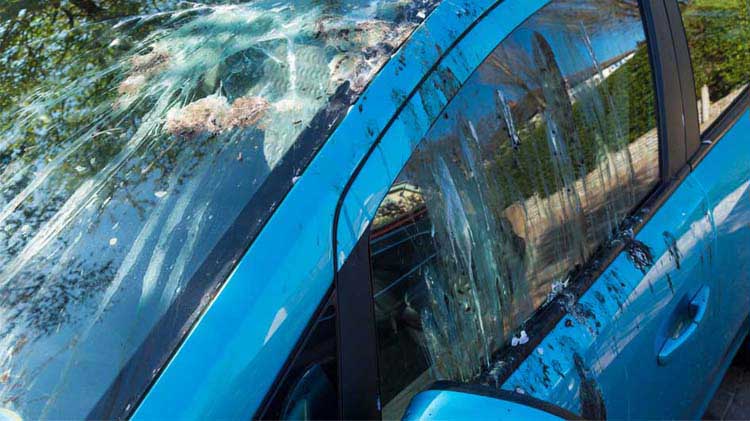How to get rid of bed bugs
Bed bugs are nasty pests, but there are ways to deal with them. You may find these tips helpful for getting rid of an infestation or preventing one before it happens.
Notorious for infesting mattresses, bed bugs can also slip into chairs, couches and electric outlets. They can live under wallpaper and in appliances. They infiltrate homes and hotels, hospitals and offices. In short: They can be everywhere, they're hard to find and they're tricky to get rid of. Arm yourself with these tips on helping identify, eliminate and prevente bed bugs.
How to identify bed bugs
These pests bite and feed on blood, but they are not known to transmit disease. Fully grown, bed bugs look like an apple seed — long, brown, oval and flat; their eggs are pearly white and tiny. The egg-to-adult life cycle is about five weeks and female bed bugs can lay up to 500 eggs in their 6- to 12-month life spans.
Bites often resemble hives, a rash or even bites from another insect, making them a notoriously bad predictor of a bed bug infestation. Instead, look for red or brown stains, eggs and eggshells and shed skin on sheets or mattresses. Bed bugs tend to be more active at night and can bite both humans and animals. Because of their small size, they can be hard to spot. They commonly hide in mattresses or near the bed for easy access to people. They can also be found inside box springs, in curtain folds (especially in bedroom windows), in crevices such as the joints of drawers or cabinets and between couch cushions.
How do you get rid of bed bugs?
You may need to consult a pest management company or bed bug exterminator to effectively eliminate them from your home, but you can follow these steps to try and do it yourself:
- Use heat. Heat is one of the more effective methods to kill bed bugs. Remove infected clothing, bedding or other items that can be washed. Use hot water, then run them through the dryer on high heat. Things that can’t be washed can be put in the dryer in the hottest setting. It is recommended to run it for at least 30 minutes. You can also put items in a black plastic bag and place them in the sun to heat. The temperature to effectively remove bed bugs is about 122 degrees Fahrenheit. On the other hand, cold treatment may also work, but only below zero degrees Fahrenheit. At moderate temperatures, bed bugs can survive for months and reproduce, so if you’re aiming to solve the infestation this way, be careful to reach the required temperature to prevent further spread.
- Vacuum everything. Vacuuming does not kill bed bugs but can help to gather very large infestations. After you have vacuumed up the bugs, place the vacuum cleaner bag in a sealed plastic bag and dispose of it in the trash. Consider vacuuming your bed and the surrounding areas every day, including the molding and windows.
- Remove clutter. If you have clothes, shoes, stuffed animals and furniture that is all around the bed where you found bed bugs, clean and remove those to help avoid some bed bugs hiding.
- Dispose of furniture. Since bed bugs can travel, if you are unable to thoroughly clean home furnishings, consider sealing items in bags for at least a year. You can also destroy or mark furniture as bed bug infested before disposing of it. By doing so, you may help avoid bed bugs entering another home.
- Use traps. Traps and tools, called interceptors, may help keep bed bugs from climbing furniture.
- Re-inspect your home. Inspect your home after several days and weeks to check that all bed bugs are gone.
- Chemical removal. There are a number of chemicals that can discourage or remove bed bugs. The most common of these are two pesticides known as pyrethrins and pyrethroids which, while generally effective, some bed bugs have begun growing resistant to. In those cases, another category of chemical known as neonicotinoids have been shown to be effective. It is recommended that if chemicals or pesticides are used, they are approved for bed bug use by the Environmental Protection Agency (EPA). In addition, use as directed, do not use on bedding or a mattress unless the label says it is safe to do so, and consider the safety of others especially children and pets when applying.
- Desiccants. Less rapid than the pesticides listed above, desiccants are substances that erode the outer layer of bed bugs’ shells, causing them to dehydrate and die. This process occurs over the span of months, so it’s more gradual than spraying pesticides, but can be a non-disruptive way to deal with an infestation. Like pesticides, if you are considering using them, check that they are approved by EPA and use only as instructed by the label.
How to prevent bed bugs
An effective way to help avoid a costly bed bug infestation is to prevent them from coming into your home to begin with. When traveling, check the mattress and luggage rack in your hotel room. Once you return home, immediately wash your clothes and inspect your suitcase.
For bed bug prevention while out and about, use hard-shell luggage cases whenever possible as they are more difficult for bed bugs to penetrate. When you’ve returned home, store your suitcase in a garage or other area separate from your living space to reduce the chances of stowaway bugs entering your home.
If you use a laundromat or otherwise-shared laundry facilities to do your laundry, help protect your clothes by storing them in plastic bags as soon as they’re removed from the dryer and save the folding for when you’ve returned home. You may also be able to help protect your home by putting a mattress cover on each bed, vacuuming regularly and removing clutter so there are fewer places for them to hide.
If you purchase secondhand furniture, thoroughly inspect it for bed bugs before bringing it inside your home. Generally, the time and effort spent preventing a bed bug infestation will be less than ridding your home of an existing one. So, if you can, try to be as diligent with the proper preventative measures. If possible, try to avoid bringing used mattresses, box springs and bedding into your home.
As mentioned before, bed bugs can travel, so if you live in a multi-unit or apartment complex, it is recommended to install barriers on your doors and to seal any cracks in the baseboards and light sockets.
Does insurance cover bed bugs?
Usually, insect infestations are an exclusion to standard homeowners and renters policies, since coverage is triggered by accidental direct physical loss, and bed bugs are considered a preventable hazard. In the case of a renters policy, check with your insurance company to see if you can purchase additional coverage in the form of an endorsement or a rider to specifically cover damage resulting from bed bugs. Depending on where you live, you can also check if by state law your landlord may be responsible for damage resulting from a bed bug infestation.
If you have any questions regarding coverage on a homeowners or renters policy, consider contacting a State Farm® agent near you.
The information in this article was obtained from various sources not associated with State Farm® (including State Farm Mutual Automobile Insurance Company and its subsidiaries and affiliates). While we believe it to be reliable and accurate, we do not warrant the accuracy or reliability of the information. State Farm is not responsible for, and does not endorse or approve, either implicitly or explicitly, the content of any third-party sites that might be hyperlinked from this page. The information is not intended to replace manuals, instructions or information provided by a manufacturer or the advice of a qualified professional, or to affect coverage under any applicable insurance policy. These suggestions are not a complete list of every loss control measure. State Farm makes no guarantees of results from use of this information.
State Farm Mutual Automobile Insurance Company
State Farm Fire and Casualty Company
State Farm General Insurance Company
State Farm Indemnity Company
Bloomington, IL
State Farm Florida Insurance Company
Tallahassee, FL
State Farm County Mutual Insurance Company of Texas
State Farm Lloyds
Richardson, TX




